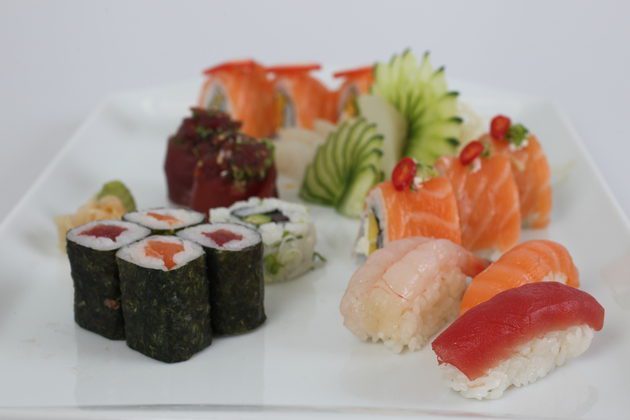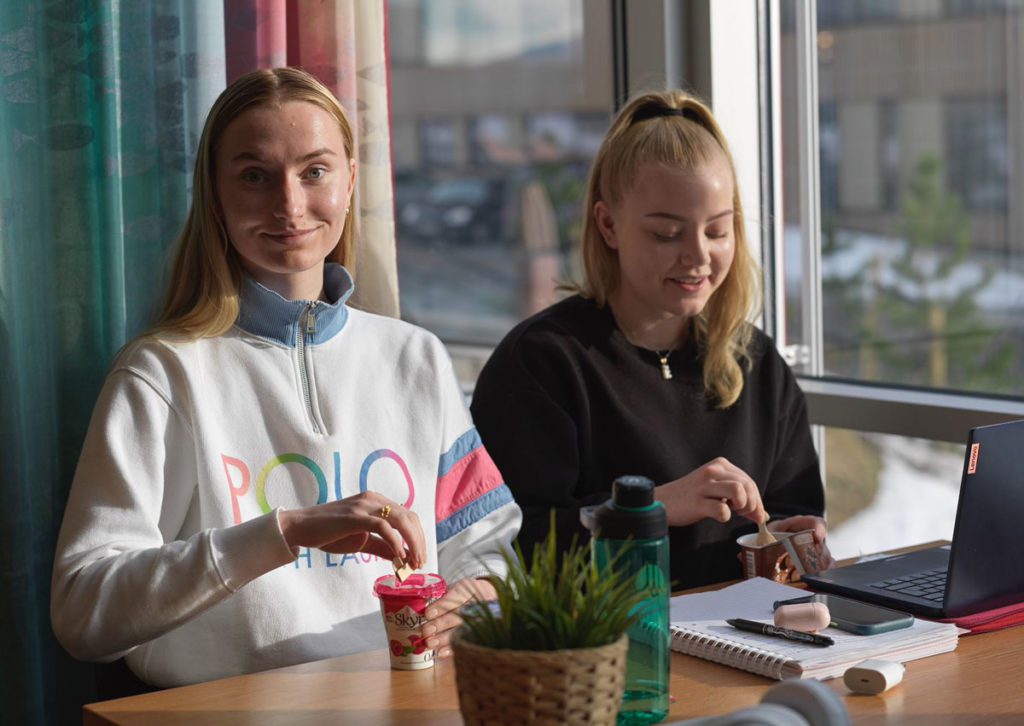Young adults want inspiration to eat more seafood

An important message to Norwegian seafood producers: Young adults are motivated to eat more healthy seafood. However, they need inspiration to get started!
Can cool online chefs, social media and influencers be the solution?
“Young adults are motivated to eat more seafood – we just have to inspire them through the right channels”, says Nofima scientist Siril Alm.
Mia Eline Kaarstad (21) from Odda in Hardanger and Marthe Sollied Nordgård (19) from Senja can confirm this. They are both first-year aquamedicine students at the Norwegian College of Fishery Science (NFH) in Tromsø, and are in the process of establishing their own eating habits away from home.
“I get a lot of inspiration from my mother and stepfather when it comes to food, but Tik Tok also plays a role in my food choices”, smiles Mia Eline Kaarstad.

Declining seafood consumption
Despite the fact that people have become more concerned with having a healthy diet, seafood consumption in Norway has been declining for several years – especially among the younger population. Norwegian health authorities recommend eating seafood for dinner two to three times a week so as to provide a basis for good health. This is the equivalent of eating 300 to 450 grams of pure fish. The oldest members of the population eat the most seafood, while the youngest ones eat less and less. The 18 to 34 age group consumed 46 percent less seafood in 2017 compared to 2012.
The authorities and the fishing industry fear that fish eaters could become ‘endangered’ if we fail to motivate young adults to eat more fish”, says Siril Alm.
However, the trend can be reversed. A Nofima survey indicates that seafood consumption can be increased if young people are inspired to make exciting dishes with seafood such as white fish.
Many opportunities to motivate
In Nofima’s ‘Seafood as an everyday dinner’ survey, which is funded by the Ministry of Trade, Industry and Fisheries, the scientists investigated what motivated and prevented 26 young adults from eating more seafood for dinner.
“The findings of the study indicate that fish producers, especially whitefish producers, have many opportunities to motivate young adults to eat more seafood. Examples include marketing the products and recipes on social media via influencers. Young people like to cook together, so maybe one could organise digital cooking courses to motivate them to cook dishes they haven’t tried before? Collaboration with restaurants, chefs and food box suppliers is also interesting”, says Siril Alm.
Mia Eline and Marthe at NTH like the idea. Both live in student accommodation in Tromsø and try to make healthy meals as often as possible. Meatballs in gravy and fish gratin, which they learned to make at home, are meals that often feature on the menu. The same goes for cool dishes, often vegetarian ones, that they find recipes for online. However, there is an important aspect for them as students: The food must be as cheap as possible in addition to being healthy and tasty.
“The ‘Poor Student’ cookbook is good, but fish doesn’t feature in new dishes that often”, says Marthe Sollied Nordgård.
Young adults are potentially a very important customer group for food producers – including seafood producers. Habits do not influence them that much and they are receptive to new impulses and food trends. When young people leave home, many ‘rebel’ against their parents’ food traditions. They want to try new dishes and ingredients and develop new eating habits that they take with them in their new lives. This means that they no longer want to make traditional dishes such as boiled cod and fish cakes in gravy.
“Although the sample in the study is small and not representative, since most were single women in their 20s, it should be gratifying for both authorities and seafood producers that most of them wanted to eat more seafood”, the scientist says.
Poke bowl and sushi
The number of seafood dinners among the survey respondents varied from once a month to six times a week. The seafood dishes usually consisted of salmon or trout and were rarely prepared in the same way the young adults got them when growing up.
“Dishes such as poke bowl and sushi were described as exciting dishes that delicate images on digital platforms had inspired them to make. Young people were asked to send us pictures of their dinners, and the 367 photographs that we received also mirrored this. 30 percent of the images contained seafood and more than half included salmon or trout”, says Siril Alm.
Participants in the study said they often used social media and influencers on Instagram, Pinterest, YouTube and blogs to get inspiration to try new foods. Several of these influencers had sponsors and collaborated with food producers for whom they advertised. None of the sponsors were seafood producers.
“We asked the respondents to send us names and internet links to the sources that they knew for certain had inspired them to make new dinnertime meals. A closer investigation of these sources, which included 18 websites, eight Instagram profiles and nine blogs, showed that they contained almost 30,000 dinner recipes, with 21 percent containing seafood – mainly salmon”, says Siril Alm.

Never heard of godfisk.no
Only three participants had been inspired by godfisk.no, which is the seafood industry’s marketing channel. Many had never heard of godfisk.no. Of the nine blogs visited by the scientists, four were vegetarian blogs.
Common to most of the young consumers was that they wanted to reduce their consumption of red meat and eat more sustainable foods, such as vegetables, chickpeas and beans.
“Several of the participants said that they rarely remembered to make seafood. Most were positive when we asked if they would like to have seafood with the vegetarian dishes. Wild-caught seafood such as cod was considered a sustainable alternative, and something they would like to eat more of. They used blogs and influencers to learn how to make vegetarian dishes, and had therefore not considered seafood as an option”, says the scientist.
This part of the study is also confirmed by the two NFH students.
“The food inspiration for our generation seems to be turning more and more towards vegetarian and vegan food”, says Marthe Sollied Nordgård.
“But we love chicken, too”, laughs Mia Eline, glancing at her student friend.
Inspired by travel
Siril Alm also points out – as shown in the study – that many of today’s young adults have travelled quite a lot and lived abroad. They were therefore inspired by dishes and ingredients from other cultures that they had tasted on these journeys.
“Typical exciting dishes were inspired by Chinese, Korean, Indian, Mexican or Italian cuisine. So, exotic dishes that include Norwegian seafood ingredients can inspire these consumers to increase their seafood consumption”, says Siril Alm.
Contact person
Topics
Seafood
